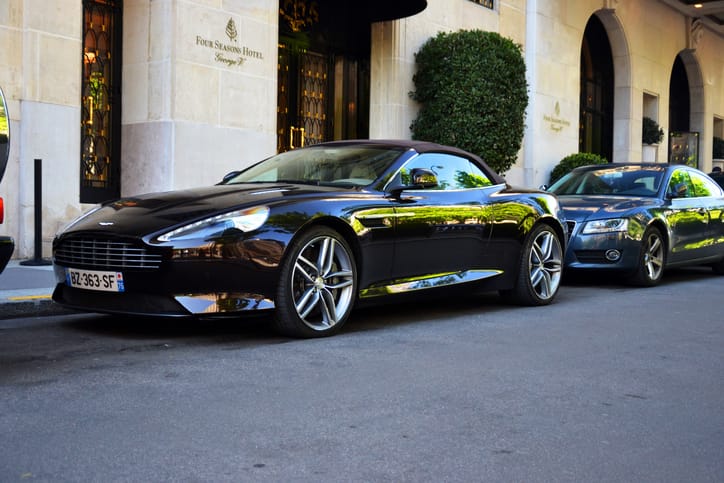Aston Martin Virage: A Tale of Two Grand Tourers Across Decades

The name "Virage" within the Aston Martin lineage evokes two distinct yet captivating grand tourers, each representing a pivotal era in the British marque's history. This article delves into the stories of these legendary vehicles, exploring their design, performance, and impact on the automotive landscape.
The First Act: Elegance and Power Redefined (1988-1996)
Born in 1988, the first Virage marked a bold departure from its predecessors. Designed by John Heffernan and Ken Greenley, it shed the boxy lines of the V8 models for a modern, sleek silhouette. The flowing curves, integrated bumpers, and hidden headlamps embodied a refined elegance that resonated with a new generation of luxury car buyers.
Under the hood, the Virage housed a 5.9L V8 engine, a significant upgrade from the earlier models. Delivering 330 horsepower and 320 lb-ft of torque, it propelled the car from 0-60 mph in 6.3 seconds, solidifying its position as a powerful grand tourer. The optional Vantage model pushed the boundaries further, boasting a 6.3L V8 with 400 horsepower and a 0-60 mph time of 5.3 seconds.
The interior exuded luxurious craftsmanship, featuring Connolly leather upholstery, walnut veneer accents, and thoughtful ergonomic design. The spacious cabin provided ample comfort for four passengers, while the ample boot space ensured practicality for long journeys.
The Virage wasn't just about aesthetics and performance; it also introduced significant technological advancements for Aston Martin. It was the first model equipped with anti-lock brakes and driver's airbags, marking a step toward enhanced safety standards.
Despite its critical acclaim and initial sales success, the Virage faced an economic downturn in the early 1990s. Production ceased in 1996, leaving an indelible mark on the history of Aston Martin.
The Second Act: A Refined Powerhouse Returns (2011-2020)
Fast forward to 2011, and the Virage name made a triumphant return. This time, it wasn't a replacement for the V8 models but a luxurious grand tourer positioned above the DB9. Borrowing heavily from the DB9's platform, the new Virage adopted a sleeker, more aggressive design language. The elongated front grille, sharp headlights, and sculpted body panels exuded a dynamic presence.
The heart of the beast was a 6.0L V12 engine producing 490 horsepower and 460 lb-ft of torque. This potent combination translated to a 0-60 mph time of 4.6 seconds and a top speed of 190 mph, solidifying the Virage's position as a true performance grand tourer.
The interior, like its predecessor, was a haven of luxury. Plush Bridge of Weir leather, hand-stitched details, and advanced technological features like a Bang & Olufsen sound system and a touchscreen infotainment system created an opulent and connected driving experience.
The Virage catered to a discerning clientele seeking an exclusive and powerful alternative to the DB9. However, after a decade of production, Aston Martin discontinued the model in 2020, paving the way for new technological advancements within their grand tourer segment.

Legacy and Significance
Both iterations of the Virage played distinct roles in shaping Aston Martin's trajectory. The first Virage represented a significant leap forward in design, performance, and technology, laying the foundation for future models. The second Virage rekindled the name's legacy, offering a powerful and luxurious grand tourer for a new generation of enthusiasts.
While no longer in production, these two Virage models continue to captivate collectors and car enthusiasts alike. Their timeless design, exceptional performance, and luxurious craftsmanship solidify their place among the most coveted Aston Martins ever created. Whether it's the elegance of the first or the power of the second, the Virage name remains synonymous with automotive artistry and a commitment to driving excellence.
